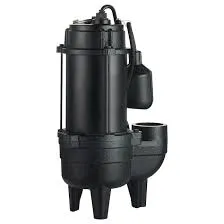English
- Afrikaans
- Albanian
- Amharic
- Arabic
- Armenian
- Azerbaijani
- Basque
- Belarusian
- Bengali
- Bosnian
- Bulgarian
- Catalan
- Cebuano
- Corsican
- Croatian
- Czech
- Danish
- Dutch
- English
- Esperanto
- Estonian
- Finnish
- French
- Frisian
- Galician
- Georgian
- German
- Greek
- Gujarati
- Haitian Creole
- hausa
- hawaiian
- Hebrew
- Hindi
- Miao
- Hungarian
- Icelandic
- igbo
- Indonesian
- irish
- Italian
- Japanese
- Javanese
- Kannada
- kazakh
- Khmer
- Rwandese
- Korean
- Kurdish
- Kyrgyz
- Lao
- Latin
- Latvian
- Lithuanian
- Luxembourgish
- Macedonian
- Malgashi
- Malay
- Malayalam
- Maltese
- Maori
- Marathi
- Mongolian
- Myanmar
- Nepali
- Norwegian
- Norwegian
- Occitan
- Pashto
- Persian
- Polish
- Portuguese
- Punjabi
- Romanian
- Russian
- Samoan
- Scottish Gaelic
- Serbian
- Sesotho
- Shona
- Sindhi
- Sinhala
- Slovak
- Slovenian
- Somali
- Spanish
- Sundanese
- Swahili
- Swedish
- Tagalog
- Tajik
- Tamil
- Tatar
- Telugu
- Thai
- Turkish
- Turkmen
- Ukrainian
- Urdu
- Uighur
- Uzbek
- Vietnamese
- Welsh
- Bantu
- Yiddish
- Yoruba
- Zulu
Telephone: +86 13120555503
Email: frank@cypump.com
Nov . 16, 2024 10:05 Back to list
screw pump centrifugal chemical pump
The Role of Screw Pumps and Centrifugal Chemical Pumps in Industrial Applications
In the world of industrial fluid handling, pumps are indispensable components that facilitate the movement of liquids across various sectors, including chemical processing, mining, and wastewater management. Among the myriad types of pumps available, screw pumps and centrifugal chemical pumps stand out due to their unique operating principles and advantages. This article explores these two pumping technologies, comparing their functionalities, applications, and benefits.
Understanding Screw Pumps
Screw pumps operate using the principle of positive displacement. They consist of one or more screws that rotate within a cylindrical housing. As the screws turn, they create a vacuum that draws fluid into the pump, subsequently pushing it out through the discharge port. This design ensures a continuous flow, making screw pumps ideal for handling viscous fluids and slurries that may pose challenges for other types of pumps.
One of the primary advantages of screw pumps is their ability to maintain a steady and consistent flow rate, regardless of system pressure fluctuations. This characteristic is particularly beneficial in processes requiring precise flow control, such as the chemical industry, where the protection of the integrity of sensitive materials is critical. Additionally, screw pumps can handle fluids containing solids without significant wear and tear, making them suitable for applications involving abrasive materials.
Exploring Centrifugal Chemical Pumps
In contrast, centrifugal chemical pumps function based on the principle of kinetic energy. They utilize a rotating impeller to impart velocity to the fluid, converting this kinetic energy into pressure energy as it moves from the pump's inlet to the discharge. Centrifugal pumps are among the most widely used pumps in industrial settings, thanks to their simplicity, reliability, and efficiency.
Centrifugal pumps excel in transporting large volumes of low-viscosity fluids. They are particularly adept at handling chemicals, water, and light oils, making them a stalwart in the chemical processing industry. The ability to operate at high speeds and their relatively straightforward design contribute to lower operational costs and easier maintenance compared to screw pumps.
screw pump centrifugal chemical pump

Application Scenarios
Both screw and centrifugal pumps find extensive applications in varied industries. In chemical processing, screw pumps are favored for moving viscous fluids like polymers and syrups, where maintaining a consistent flow is essential. They are also used in the food industry for transferring delicate ingredients without damaging their structure.
Centrifugal pumps, on the other hand, are prevalent in applications ranging from water treatment to petroleum refining. They are particularly effective in scenarios where large volumes of fluids need to be transported swiftly and efficiently. From circulating water in cooling systems to handling harsh chemicals, centrifugal pumps are integral to a myriad of processes.
Benefits and Considerations
When selecting between screw and centrifugal pumps, several factors should be considered, including the nature of the fluid, the required flow rate, and the operating conditions. Screw pumps typically offer improved performance with viscous and abrasive liquids, offering longevity and lower maintenance needs in such applications. However, they tend to be more expensive and may require more complex installation and operation.
Centrifugal pumps are generally more cost-effective and easier to install, making them attractive for applications involving thinner fluids. However, they may struggle with slurries or highly viscous materials. Additionally, their performance can decrease significantly with changes in pressure.
Conclusion
Screw pumps and centrifugal chemical pumps serve as critical technology in the diverse landscape of industrial fluid transportation. Each has its distinct advantages and specific applications, making the choice largely dependent on the operational needs of the facility. By understanding the strengths and weaknesses of these pumping technologies, industries can enhance efficiency, reduce operational costs, and ensure the safe and effective movement of fluids in their processes.
-
ISG Series Vertical Pipeline Pump - Chi Yuan Pumps Co., LTD.|Advanced Hydraulic Design&Energy-Efficient Solutions
NewsJul.30,2025
-
ISG Series Vertical Pipeline Pump - Chi Yuan Pumps Co., LTD.
NewsJul.30,2025
-
ISG Series Vertical Pipeline Pump - Chi Yuan Pumps Co., LTD.|energy-efficient fluid handling&industrial durability
NewsJul.30,2025
-
ISG Series Vertical Pipeline Pump - Chi Yuan Pumps | Advanced Engineering&Industrial Efficiency
NewsJul.30,2025
-
ISG Series Pipeline Pump - Chi Yuan Pumps | High Efficiency, Energy Saving
NewsJul.30,2025
-
ISG Series Vertical Pipeline Pump-Chi Yuan Pumps|High Efficiency&Reliable Performance
NewsJul.29,2025










